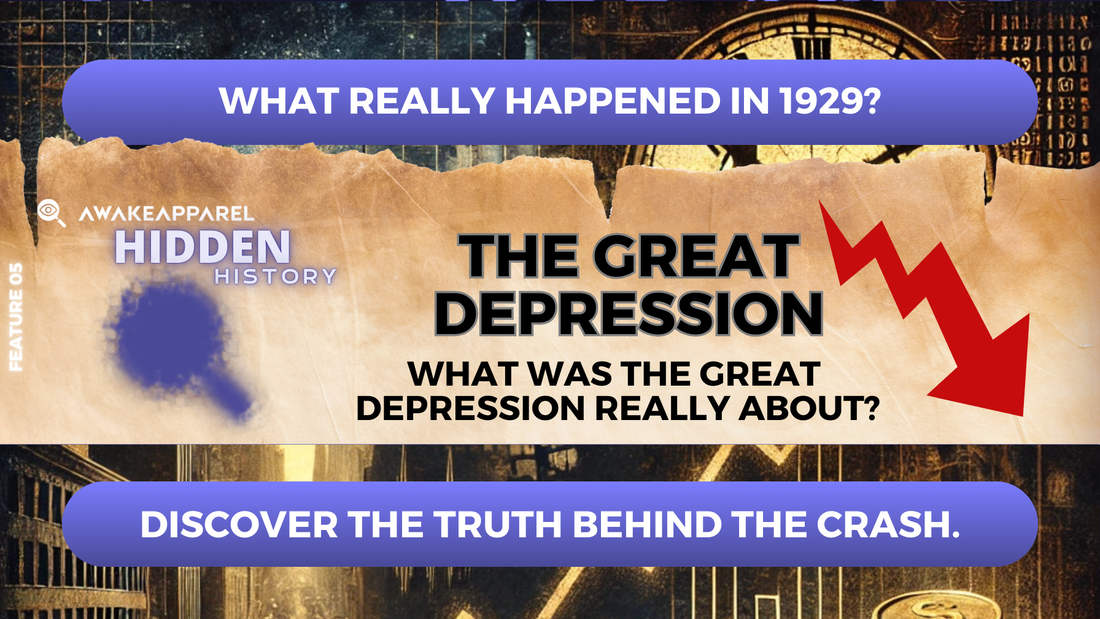
🔥 SPREAD THE TRUTH – Tap to Share!
The Great Depression wasn’t just an economic downturn—it was a seismic shift that reshaped the world’s financial systems and concentrated power in ways most people never question. While families stood in breadlines, some were cashing in. But was this devastating collapse merely a coincidence—or a carefully orchestrated “reset”?
Let’s dig into the untold story of how the Great Depression wasn’t just a crisis—it was an opportunity for those at the top.
The Timeline of a Global Shift
The Crash of 1929: A “Perfect Storm” or a Perfect Plan?
- The stock market crash on October 29, 1929, known as Black Tuesday, wiped out fortunes overnight—but not everyone was blindsided.
- Insider trading, speculative booms, and market manipulation played massive roles in creating the crash. But the aftermath? That’s where things get interesting.
The Banking Crisis: Who Held the Keys?
- As banks failed, millions lost their life savings. Yet powerful financial institutions quietly bought up failing banks and assets for pennies on the dollar.
- Key players like J.P. Morgan, Rockefeller, and Warburg families had the resources to weather the storm—and to consolidate their influence further.
- The Federal Reserve’s Role: Help or Hinderance?
- The Federal Reserve, created to stabilize the economy, raised interest rates instead of lowering them, exacerbating the financial crisis.
- Was it incompetence—or strategy? With liquidity drained from the economy, the everyday person was left powerless, while the elite grew their control over financial systems.
Who Benefited from the Great Depression?
1. Banking Dynasties: Major banking families acquired struggling institutions, extending their power and reach.
2. The Industrial Elite: Factory closures forced smaller competitors out of the market, allowing monopolies to tighten their grip on entire industries.
3. Global Restructuring: The crisis provided a pretext for reshaping international finance, paving the way for central banks and future institutions like the International Monetary Fund (IMF).
The Psychological Toll: Fear as a Tool
- The Great Depression wasn’t just an economic crisis—it was a psychological one.
- Fear of losing everything kept people compliant and desperate for “solutions,” even if those solutions centralized more power into fewer hands.
Key Quote: “A fearful population is an easy population to control.”
The New Deal: A Rescue Plan—or a Rebrand?
Franklin D. Roosevelt’s New Deal was hailed as a lifeline for struggling Americans. But beneath the sweeping reforms was a reorganization of government control over finance, labor, and industry.
Parallels to Today: The Modern Reset
Look around, and you might notice echoes of the Great Depression in today’s world:
- Bank bailouts during financial crises—who really gets saved?
- Rising inequality and the consolidation of power in multinational corporations.
The term “Great Reset” has re-emerged in the 21st century. But the question remains: Reset for whom—and at whose expense?
The Empowerment Zone: What Can You Do?
1. Understand Financial History: Learn how economic collapses have been used to redistribute power—not just wealth.
2. Diversify Your Resources: Just like the Great Depression taught us not to put all our money in one place, consider how you can build resilience in your life.
3. Share the Story: Knowledge is power. Share this history and start conversations about the patterns we see repeating today.
Closing Thought: Breaking the Cycle
The Great Depression taught us that “too big to fail” isn’t just about banks—it’s about narratives. The more we understand how these resets work, the better prepared we are to reclaim our power.
When you understand the past, you see through the present.
Want more truth unveiled? Your support fuels independent research and content that challenges the official story. Share, shop, or donate to keep history from being rewritten by the powerful.













